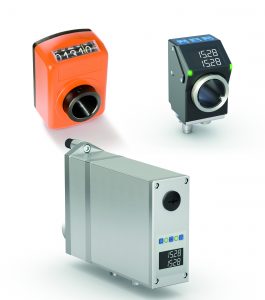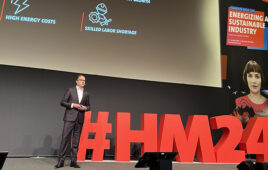The demands on the flexibility of modern production facilities continue to increase. The large variety of products and ever smaller batch sizes focus attention on optimum system availability. Short setup times, for example for size changes, are a standard requirement for production and packaging machines.

One approach is to consider each machine axis separately regarding size changes and to deploy the size changeover solution most useful technically and economically for the user. Network connectable sensors ease this approach.
Whether inexpensively with a hand wheel, process-reliably with bus-capable position display or fully automatically with an actuator, the reliability and handling of the positioning systems used is crucial for flexible production processes. Manual, electronically monitored or fully automatic size changeover – when does each solution make sense?
Manual size changeover solutions
For setting positions in a machine that rarely needs adjustment, there’s the classic mechanical and digital position indicator. They are inexpensive, and the accurate display of the actual value makes setting the spindles reproducible. However, setup times – i.e. the machine’s downtime during a product change – are the highest with this solution as each position must be set manually. The settings must also be checked manually and possibly verified in a test run of the system before series production can be resumed.
Monitored size changeover with bus capability
Bus-capable position indicators with setpoint/actual value comparison and status display of the manual adjustment offer technical advantages over purely mechanical position indicators, making them “smart.” A machine operator can see from far away the brightly lit LEDs, indicating whether the machine axis is set correctly or not. Integrated LEDs also display the direction in which an axis should be adjusted. The position indicators obtain their basic parameters and the desired setpoint position from the machine control system through a fieldbus.
So when is it advisable to use electronic, bus-capable position indicators?

The compact-positioning drives are available up to a torque of 14 Nm (type AG24). The drives have a hollow shaft with a clamping ring for easy and quick installation. Depending on the version, the standard AG series have an integrated 2-line LCD display and a built-in keypad. Not only can the individual IP addresses be assigned; the current actual value and the respective setpoint can also be directly monitored in order to maintain an overview in the case of diagnostics.
These type of sensors suit applications when several size changeovers are required per day. The integrated setpoint/actual value comparison leads to improved process reliability. Their use is more intuitive than purely mechanical solutions.
Automatic size changeover with compact positioning drives
With their short clock and setup times, compact actuators offer solid performance and guarantee the exact and automatic positioning of machine axes. This feature leads to higher productivity, continuity of production and more profitability. Integrated fieldbus and industrial Ethernet communication interfaces make the drives flexible in integration.

Through the display and the keyboard, each stored parameter can be checked and adjusted if necessary. Possible operating data can be read out and errors can be diagnosed without an analysis via the fieldbus being necessary.
Jürgen Schuh, DriveLine Product Manager for SIKO GmbH in Buchenbach, knows from the experience of his customers that standby times for machines and installations can be considerably shortened using automatically driven actuators. Said Herbert Erath (Head of Special Machine Engineering at Fischer): “We were able to reduce the setup times from 45 minutes to less than five minutes. That’s an enormous gain in efficiency.”
Intelligent networking
The connection of actuators or electronic position indicators to different fieldbus systems allows multiple devices with a single communication interface to exchange data with the control system. The range of available interfaces extends from a simple and inexpensive RS485 protocol to the tried and tested bus systems Profibus and CANbus. Standard technologies in the field of industrial Ethernet are also provided with Profinet, Ethernet IP, Powerlink and Ethercat.

For integration in existing machines and equipment, there are ready-to-use Plug & Play options. One example is the Siko HMI ETC5000. The Easy Touch Control 5000 and can be operated independently without any knowledge of programming and without connection to a PLC.
Intelligent and compact actuators are a first choice for users whenever frequent size changeovers with high quality demands are made. They are essential Industry 4.0 components for current and future machine designs.
Filed Under: IoT • IIoT • Internet of things • Industry 4.0





Tell Us What You Think!